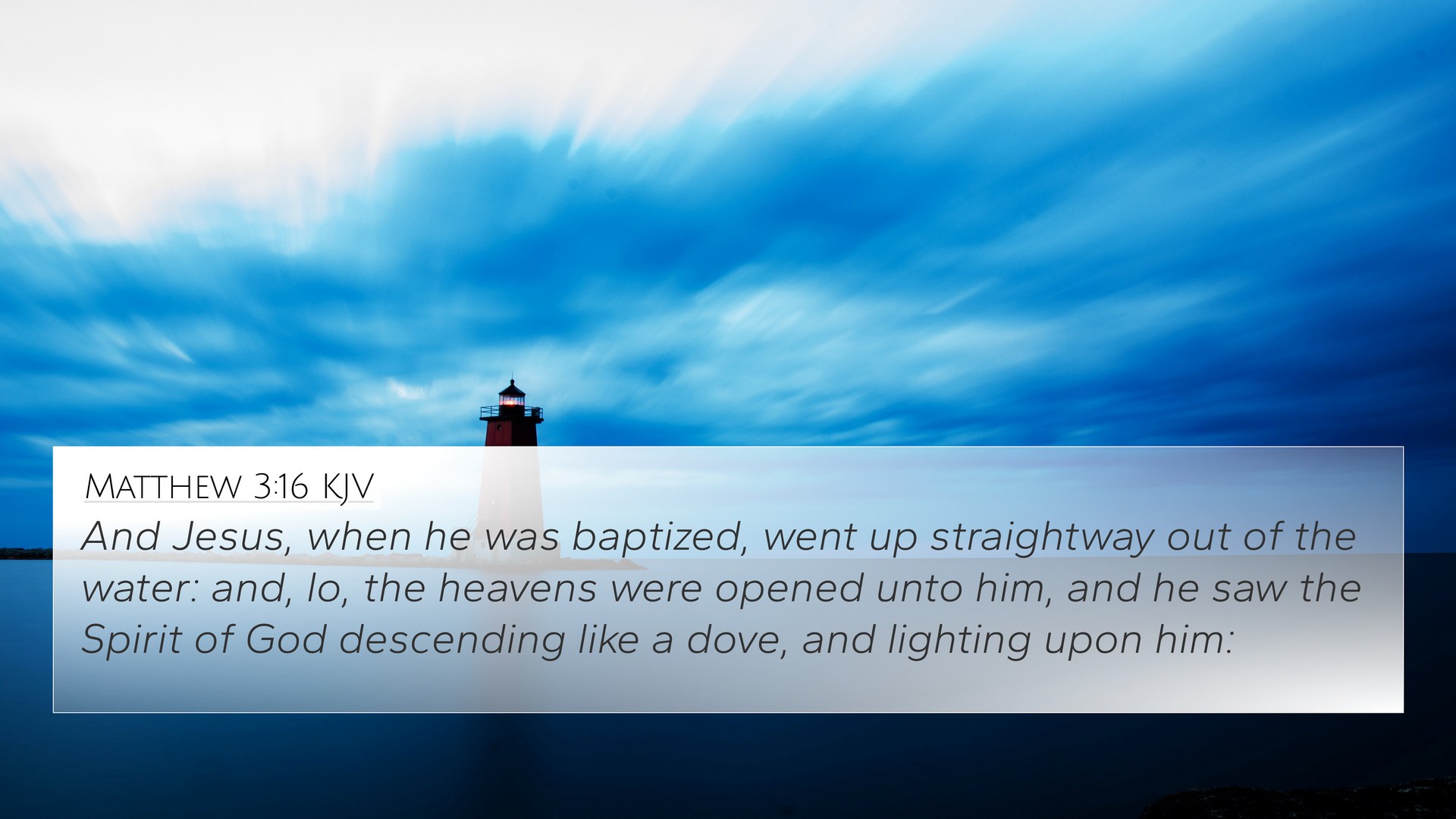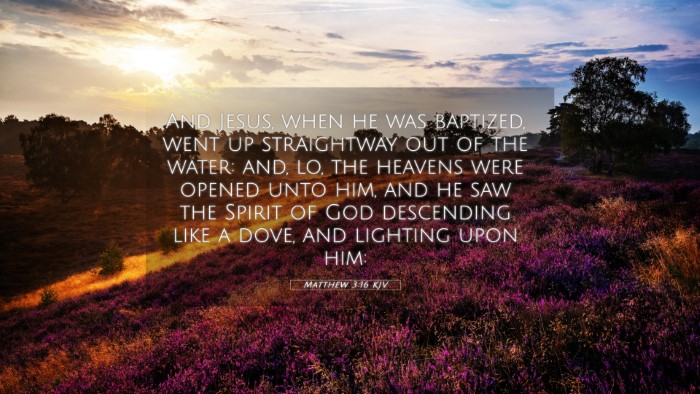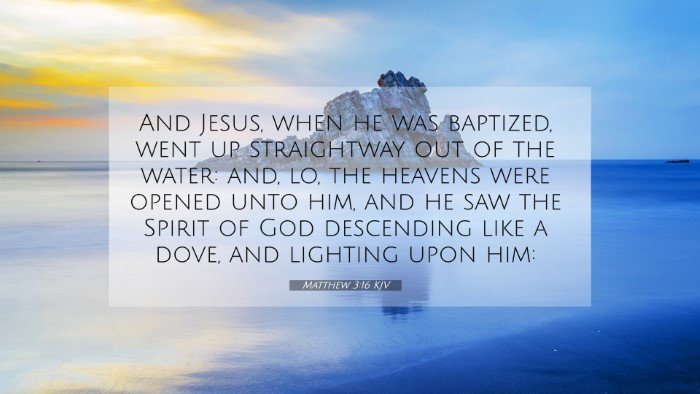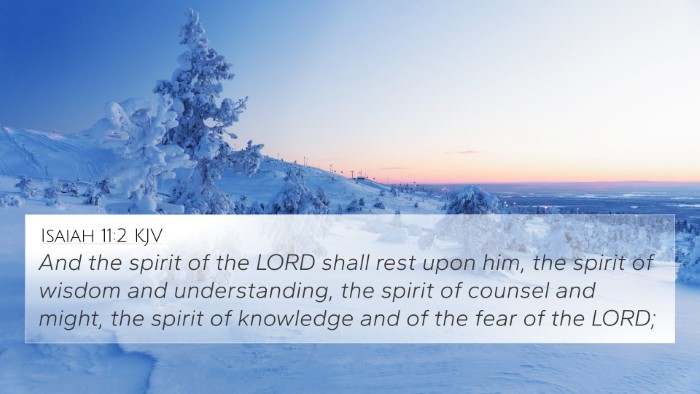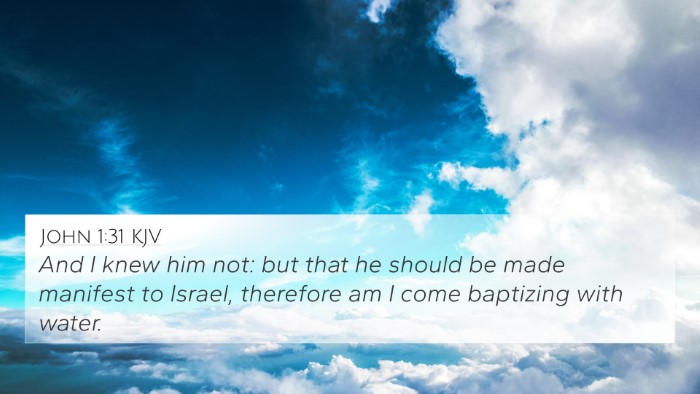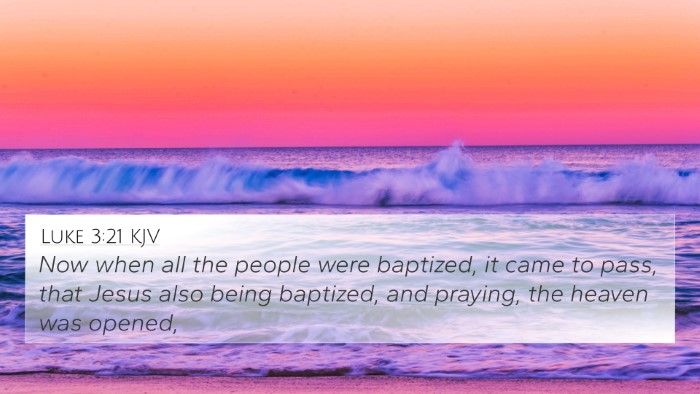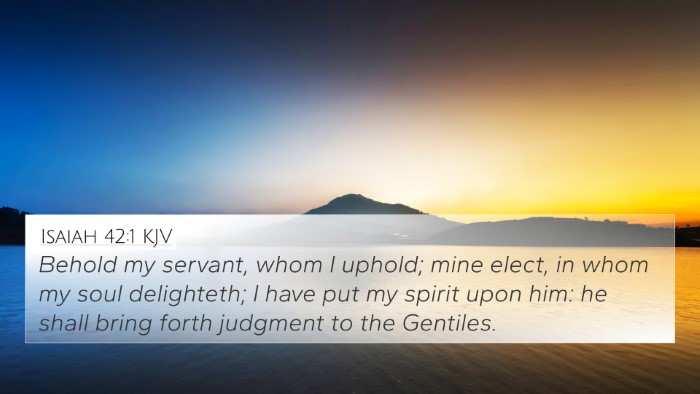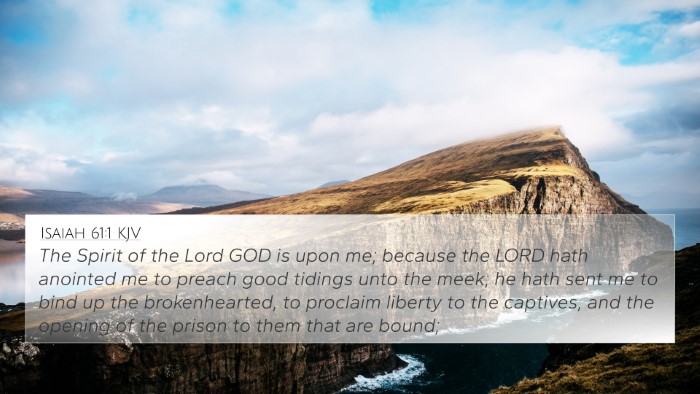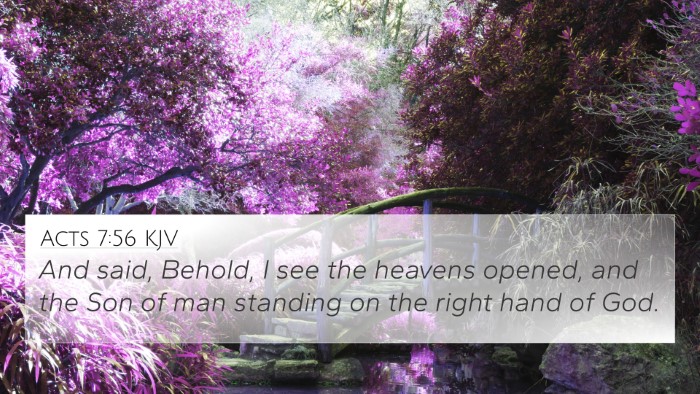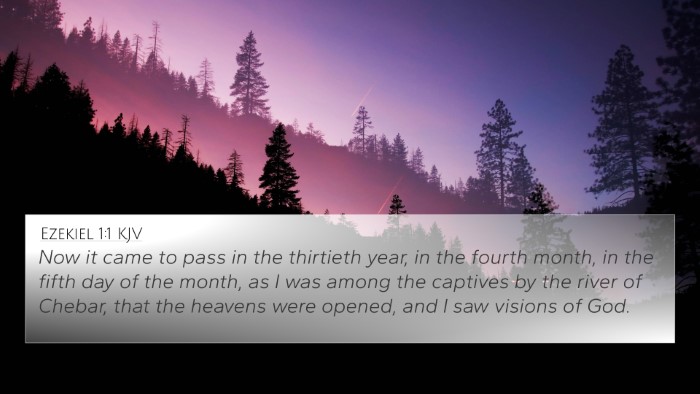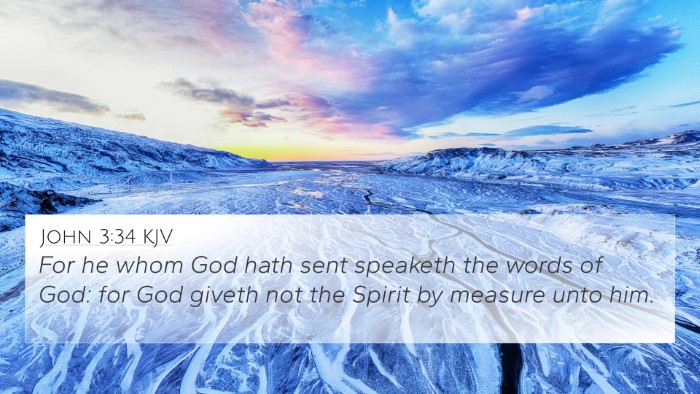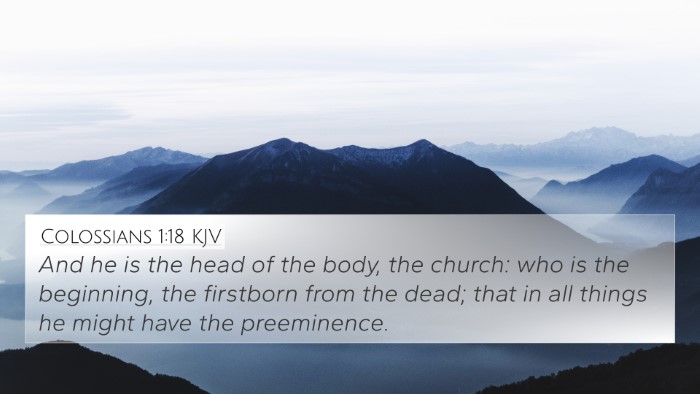Understanding Matthew 3:16
Matthew 3:16 states: "And Jesus, when he was baptized, went up straightway out of the water: and, lo, the heavens were opened unto him, and he saw the Spirit of God descending like a dove, and lighting upon him." This significant event in the Gospels encapsulates key elements of the public revelation of Jesus as the Messiah and marks the commencement of His ministry.
Summary of Insights from Public Domain Commentaries
The event of Jesus' baptism holds multiple layers of meaning:
- Matthew Henry: Henry emphasizes the significance of Jesus' act of baptism, noting that, although sinless, Jesus chose to identify with humanity's need for repentance. This act also served to fulfill all righteousness, demonstrating His obedience to God's will.
- Albert Barnes: Barnes draws attention to the visible confirmation of Jesus' divine authority at His baptism. The descending of the Spirit signifies His anointing and equips Him for His prophetic mission. This moment also parallels instances in the Hebrew Bible where God's anointing brings empowerment and purpose.
- Adam Clarke: Clarke focuses on the miraculous aspects of the baptism — the opening of the heavens and the descent of the Holy Spirit. He interprets these phenomena as divine approval of Jesus' mission and the inauguration of the new covenant.
Theological Significance of the Baptism
The baptism of Jesus constitutes a paradigm of humility and divine endorsement. Each commentator highlights three central aspects:
- Identification with Humanity: Jesus' baptism serves as a symbol of His embodiment of human experiences, even though He was without sin.
- Divine Revelation: The event reveals the Trinity — the Father speaking from heaven, the Son in the water, and the Spirit descending, pivotal for understanding the Christian doctrine of the Godhead.
- Initiation of Ministry: This baptism marks the beginning of His public ministry, setting the stage for teaching, miracles, and ultimately His sacrificial death.
Bible Verse Cross-References
Matthew 3:16 is interconnected with various scripture passages that deepen understanding through cross-references:
- Isaiah 42:1: "Behold my servant, whom I uphold; my chosen, in whom my soul delights; I have put my Spirit upon him; he will bring forth justice to the nations." This prophetic scripture foreshadows Jesus’ anointing.
- John 1:32-34: "And John bore witness, 'I saw the Spirit descend from heaven like a dove, and it remained on him...'" This passage corroborates the event described in Matthew.
- Luke 3:21-22: A parallel account that reinforces the notion of the fullness of the Godhead during Jesus' baptism.
- Acts 10:38: "God anointed Jesus of Nazareth with the Holy Spirit and with power." This verse explains how the Spirit empowered Jesus for His ministry.
- Romans 6:4: Relates the theme of baptism to Christian identity, highlighting the transition from death to life, akin to Jesus' example.
- Matthew 28:19: The Great Commission, where Jesus instructs the disciples to baptize in the name of the Father, the Son, and the Holy Spirit, tying back to the Trinitarian moment at His baptism.
- 1 Peter 3:21: Discusses baptism as a spiritual symbol of salvation, linking the act of baptism to the resurrection power demonstrated in Christ.
Connections Between Bible Verses
Davidson in his comments helps us see how Matthew's account aligns with Old Testament themes, fulfilling prophecies related to the Messiah. Notably, the role of the Spirit in Jesus’ baptism — similar to the anointing of kings in the Old Testament — indicates God's selection for His crucial mission on Earth.
Linking Bible Scriptures Through Thematic Analysis
The baptism of Jesus elucidates various themes prevalent in scripture:
- Fulfillment of Prophecy: The baptism stands as a culmination of Old Testament prophecies around the Messiah.
- The Role of the Holy Spirit: The Spirit’s descent indicates empowerment for service and highlights later Pauline teachings on the believer’s relationship with the Spirit.
- Public Declaration: Jesus identifying Himself publicly through baptism prefigures the Christian commitment represented in baptism today.
Cross-Referencing Biblical Texts for Deeper Understanding
Exploring Matthew 3:16 through cross-referencing Bible study methods can foster a more profound understanding of its implications:
- Utilize Bible concordance tools to find related verses that discuss anointing and the Spirit.
- Employ CROSS-reference Bible study to draw connections between Jesus’ ministry and the anointing themes in the Old Testament.
- Study the bonding themes of baptism, such as renewal and transformation, evident in both Testaments.
Conclusion
Matthew 3:16 therefore serves not only as a pivotal event in the life of Jesus but as a significant theological marker understood through careful comparative Bible verse analysis and systematic cross-referencing of Biblical texts. Through the insights of commentators and the interconnectedness of scripture, believers can grasp the profound implications of this baptism event.
